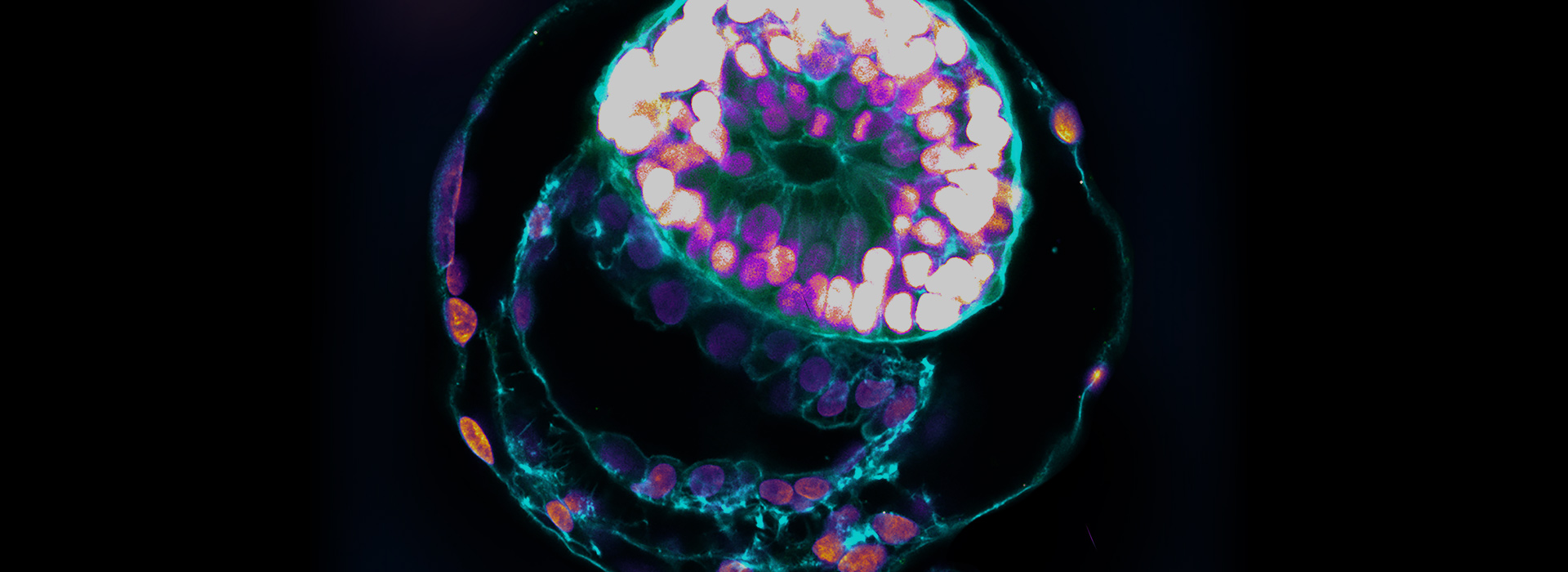Model human embryos grown from stem cells
A research team headed by Prof. Jacob Hanna from the Department of Molecular Genetics has created complete models of human embryos from stem cells cultured in the lab—and managed to grow them outside the womb up to day 14.
As reported in Nature in September 2023, these synthetic embryo models had all the structures and compartments characteristic of this stage, including the placenta, yolk sac, chorionic sac and other external tissues that ensure the models’ dynamic and adequate growth.
Given their authentic complexity, the human embryo models obtained by Prof. Hanna’s group may provide an unprecedented opportunity to shed new light on the embryo’s mysterious beginnings.
“The drama is in the first month, the remaining eight months of pregnancy are mainly lots of growth,” Prof. Hanna says. “But that first month is still largely a black box. Our stem cell–derived human embryo model offers an ethical and accessible way of peering into this box. It closely mimics the development of a real human embryo, particularly the emergence of its exquisitely fine architecture.”
The Hanna team built on their previous work in creating synthetic stem cell–based models of mouse embryos. Rather than using fertilized eggs or a womb, the scientists started out with induced pluripotent stem cells (iPSCs), which have the potential to differentiate into many, though not all, cell types. Some iPSCs were derived from adult human skin cells that had been reverted to “stemness,” while others were the progeny of human stem cell lines that had been cultured for years in the lab.
The researchers used their own novel method, first developed in 2013, to reprogram iPSCs to revert them to an even earlier state—known as the naïve state—in which they truly can become any type of cell. This stage corresponds to day 7 of the natural human embryo, around the time it implants itself in the womb.
The stem cell–based embryo-like structures (termed SEMs) developed normally outside the womb for 8 days, reaching a stage equivalent to day 14 in human embryonic development—the point at which natural embryos acquire the internal structures that enable them to proceed to the next stage: developing the progenitors of body organs.
This ethical approach to unlocking the mysteries of the very first stages of embryonic development could open numerous research paths, for example helping scientists to reveal the causes of many birth defects and types of infertility, as well as the development of new technologies for growing transplant tissues and organs. It could also offer a way around experiments that cannot be performed on live embryos—for example, determining the effects of exposure to drugs or other substances on fetal development.

Prof. Jacob Hanna’s research is supported by Pascal and Ilana Mantoux.
